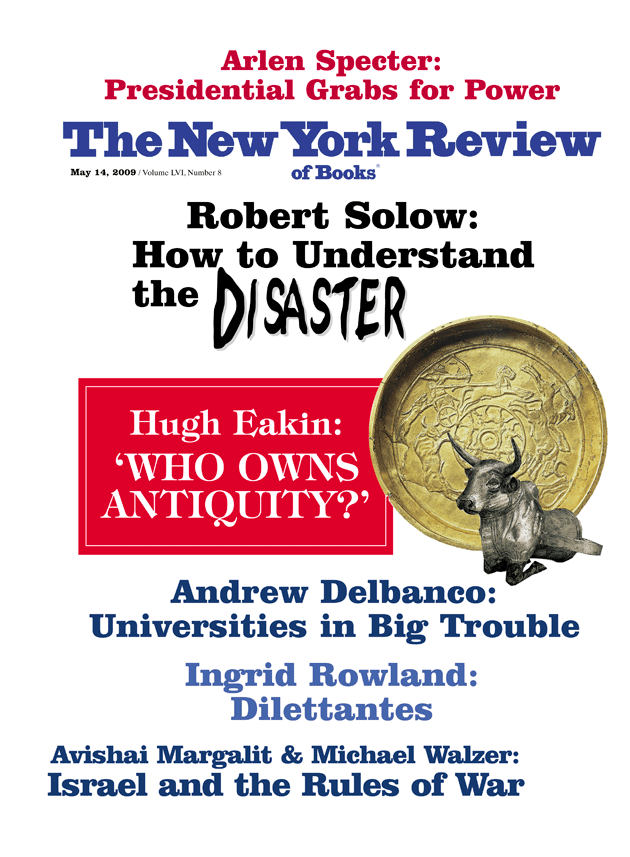To the Editors:
In his review of political scientist Larry Bartels’s book Unequal Democracy [“How Historic a Victory?,” NYR, December 18, 2008], Michael Tomasky notes that Bartels disagrees with the description of working-class conservatism I offered in my 2004 book, What’s the Matter with Kansas?
Actually, Bartels’s new book represents his third attack on my work in some official forum; considering the numerous other occasions he has evangelized against Kansas over the years, one might conclude that assailing me has become a morbid fixation for the man.
His disagreement with me mainly concerns the political preferences of the white working class. I described members of this cohort who are on the Republican right; Bartels insists that they remain staunchly Democratic. In his first effort to prove this, he defined the “working class” simply as the bottom third of the income distribution. I pointed out in 2005 what Tomasky repeats: this is a misleading metric, consisting largely of retirees, the disabled, and the unemployed.
In response, Bartels published an academic paper in which he amended his definition of the working class (to include educational attainment) but persisted with his now weakened assertion, i.e., that white workers outside the South are reliable Democrats.
Now, in Unequal Democracy, Bartels reverts to his first definition—the bottom third in income—which, conveniently, makes his conclusions more robust again.
As it happens, there is an immense sociological literature on working-class voting that is largely concerned with the movement of workers away from left parties. Bartels’s response to this well-established body of work: he ignores it almost completely.
This is unfortunate. Sociologists have debated how to measure class for decades; those I spoke to told me Bartels’s method—household income—was not one their discipline took seriously.
The standard technique is to define class by occupation. Duke University’s David Brady and two other sociologists recently broke down election results from 1972 to 2004 by occupation; their conclusions, published in Social Science Research, refute Bartels’s assertions definitively. In the aggregate, but with some exceptions for gender, they find that white working-class voters in all regions of the US turned sharply against the Democratic Party beginning in the early 1990s, the very period I describe in Kansas.
This issue is massively important since it shapes the way Democrats talk to voters, and I am sorry to see Bartels reduce it to a statistical shell game. On the other hand, I am excited to see how the professor will contrive to attack me next.
Thomas Frank
Washington, D.C.
This Issue
May 14, 2009


